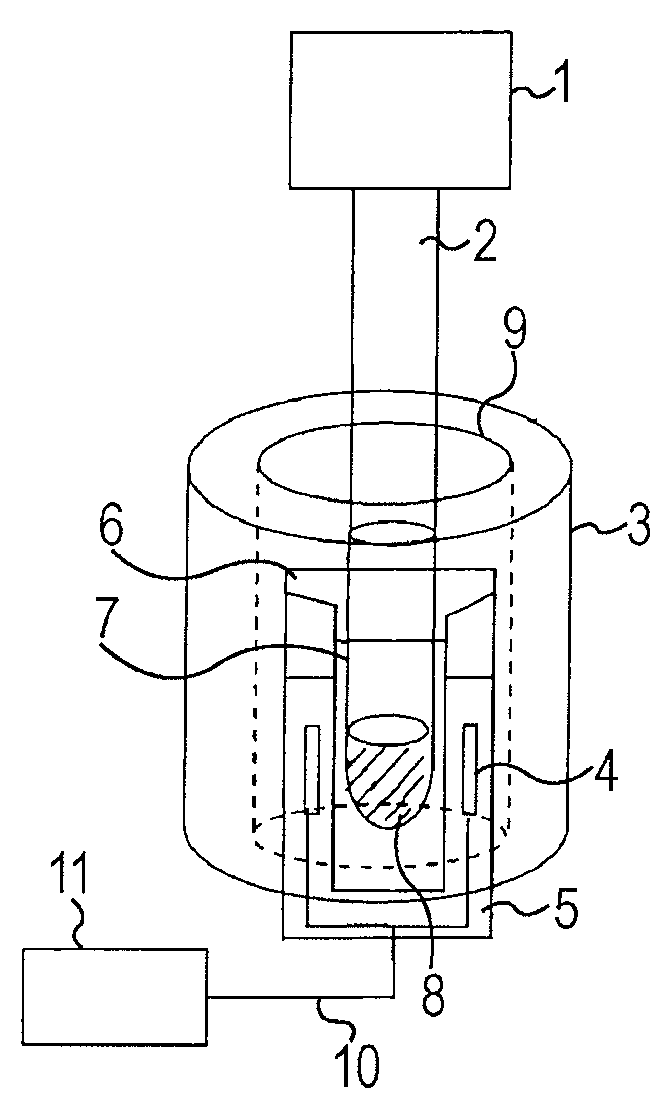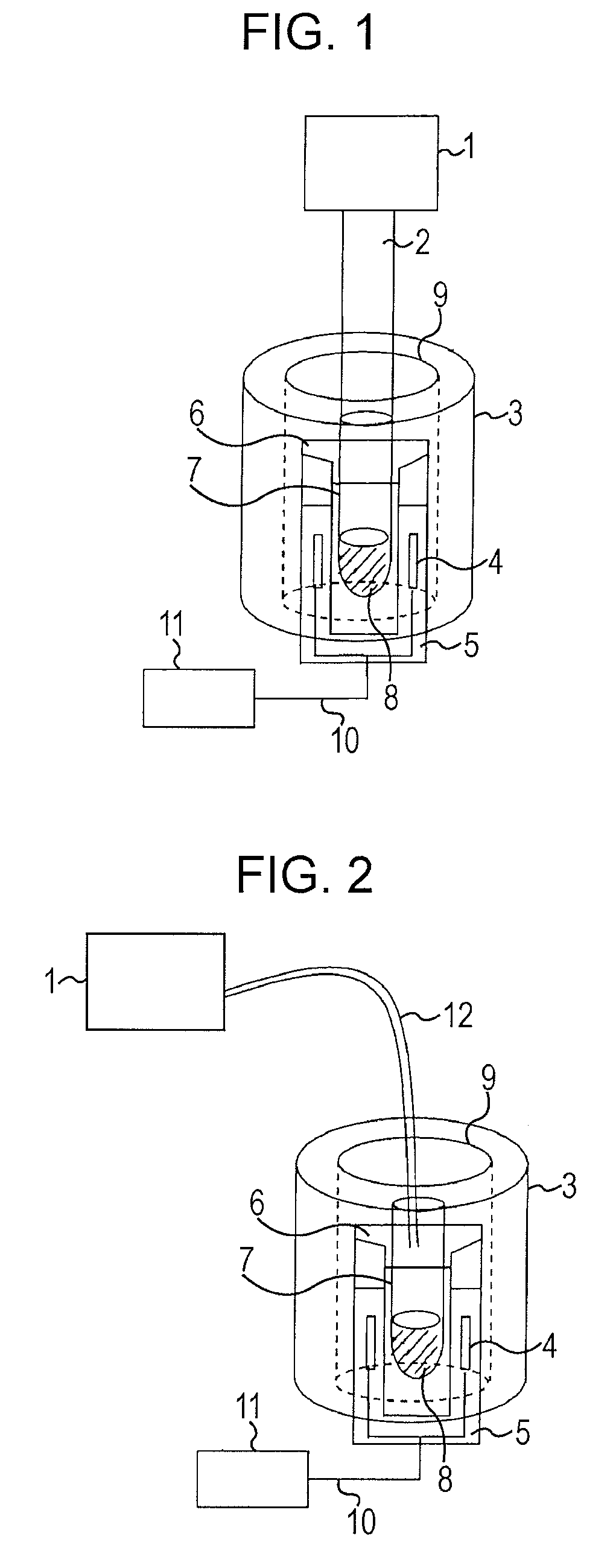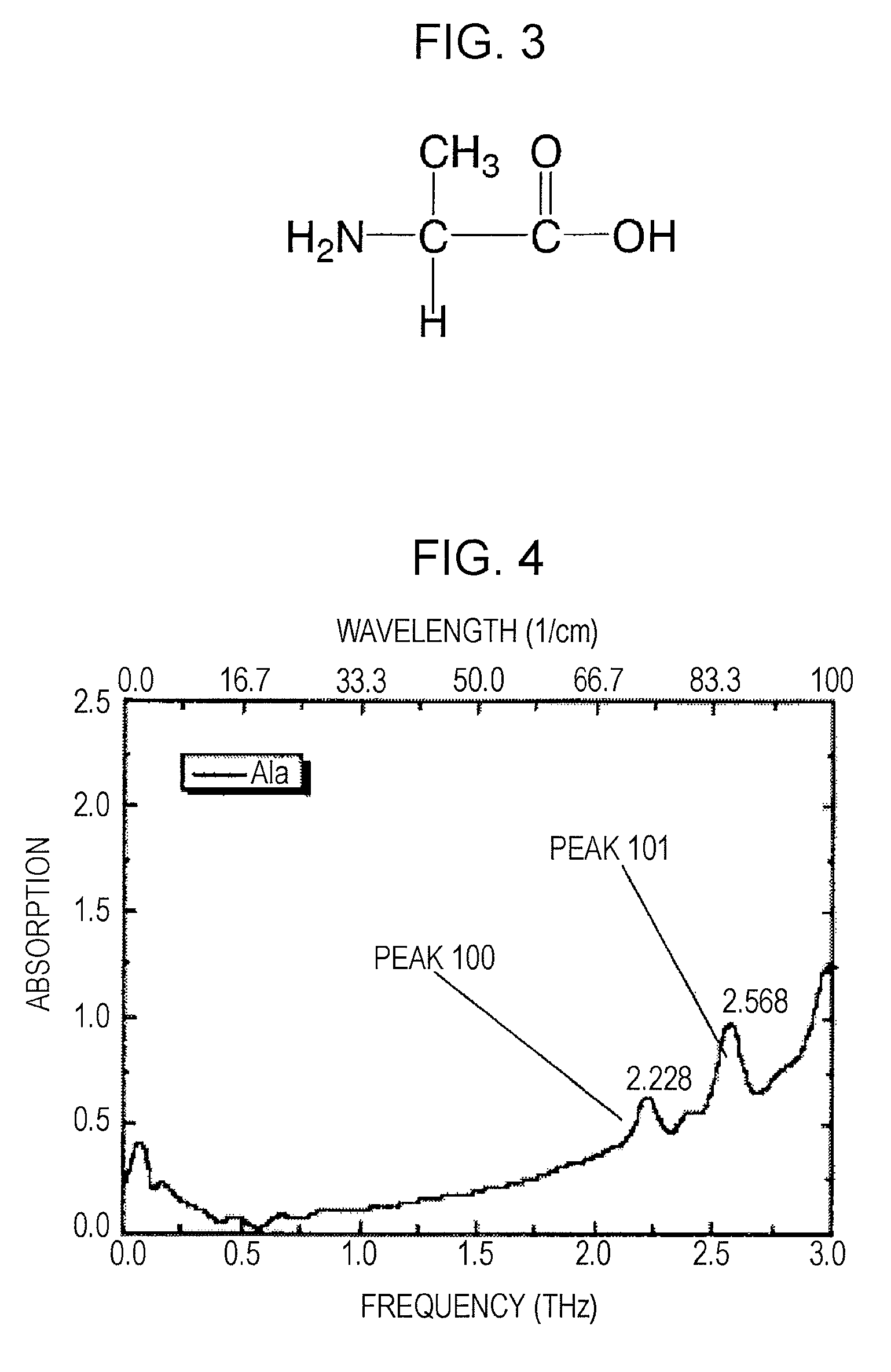Method and apparatus for analyzing sample utilizing nuclear magnetic resonance under terahertz-wave irradiation
a nuclear magnetic resonance and sample technology, applied in the field of methods and apparatus for analyzing samples, can solve the problems of low accuracy of molecular orbital calculation and the like, difficult to assign the terahertz peaks of materials in fingerprint spectra, and difficult to assign the number of spectrum data
- Summary
- Abstract
- Description
- Claims
- Application Information
AI Technical Summary
Benefits of technology
Problems solved by technology
Method used
Image
Examples
example 1
[0044]EXAMPLE 1 is an example of a method for analyzing alanine utilizing proton NMR signals under terahertz-wave irradiation of the present invention.
[0045]In this EXAMPLE, first, the terahertz-wave spectrum of alanine is measured. Alanine has a molecular structure shown in FIG. 3. It is known that alanine has an absorption spectrum in the terahertz range. The spectrum of alanine as shown in FIG. 4 is measured (for example, see “Japan's Exposition of Analytical Instruments and Solutions 2005: Teraherutsu, ensekigai bunkouhou nyumon (Introduction to Terahertz and Far-Infrared Spectroscopy), NTT Basic Research Laboratories, Katsuhiro Ajito”). In FIG. 4, elementary excitation and relaxation, such as conformational alteration and rotary motion, in a specific molecule of alanine occur at a frequency of about 2.2 THz (peak 100 in FIG. 4) or about 2.6 THz (peak 101 in FIG. 4), which is a frequency at which the peak is observed.
[0046]Next, alanine is dissolved in a deuterated solvent. The ...
example 2
[0051]EXAMPLE 2 is an example of a method for analyzing alanine utilizing carbon NMR signals under terahertz-wave irradiation of the present invention.
[0052]First, the terahertz-wave spectrum of alanine is measured to obtain the spectrum as in EXAMPLE 1. The frequency of terahertz waves used for irradiation in this EXAMPLE is equal to 2.2 THz (peak 100 in FIG. 4) or 2.6 THz (peak 101 in FIG. 4), which is a frequency at which the peak is observed in FIG. 4.
[0053]Next, alanine is dissolved in a deuterated solvent. The carbon NMR spectrum of alanine is normally measured to obtain the NMR spectrum shown in FIG. 6B. Peaks shown in the FIG. 6B can be easily assigned to carbon atoms in the alanine molecule shown in FIG. 6A (peaks 1004, 1005, and 1006). The NMR signals from the specific carbon atoms in the alanine molecule are observed by assigning the peaks in the carbon NMR spectrum.
[0054]Relaxation times of the carbon NMR signals of alanine are measured by an inversion recovery method wi...
PUM
| Property | Measurement | Unit |
|---|---|---|
| nuclear magnetic resonance | aaaaa | aaaaa |
| terahertz-wave absorption spectrum | aaaaa | aaaaa |
| terahertz-wave reflectance spectrum | aaaaa | aaaaa |
Abstract
Description
Claims
Application Information
 Login to View More
Login to View More - R&D
- Intellectual Property
- Life Sciences
- Materials
- Tech Scout
- Unparalleled Data Quality
- Higher Quality Content
- 60% Fewer Hallucinations
Browse by: Latest US Patents, China's latest patents, Technical Efficacy Thesaurus, Application Domain, Technology Topic, Popular Technical Reports.
© 2025 PatSnap. All rights reserved.Legal|Privacy policy|Modern Slavery Act Transparency Statement|Sitemap|About US| Contact US: help@patsnap.com



